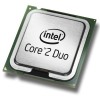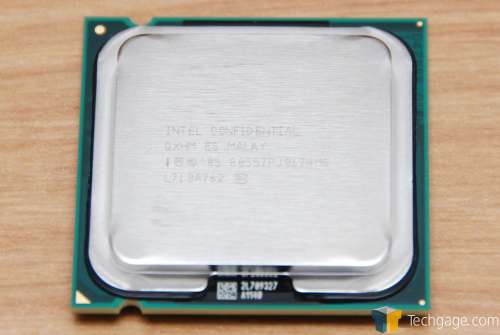- Qualcomm Launches Snapdragon 4 Gen 2 Mobile Platform
- AMD Launches Ryzen PRO 7000 Series Mobile & Desktop Platform
- Intel Launches Sleek Single-Slot Arc Pro A60 Workstation Graphics Card
- NVIDIA Announces Latest Ada Lovelace Additions: GeForce RTX 4060 Ti & RTX 4060
- Maxon Redshift With AMD Radeon GPU Rendering Support Now Available
Intel Core 2 Duo E6750 Preview

When Bearlake launched last month, it opened the doors for native 1333FSB processor support. That’s where the refreshed Conroe line-up comes into play. In our performance preview of the E6750, we will show you what to expect when it’s released later this summer.
Page 1 – Introduction
It hasn’t been a full year since we saw Intel launch their Core 2 Duo processors, but we will soon be seeing a line-up refresh. This is one product that really needs no introduction, but seeing as this is a refresh, refreshing everyones minds seems appropriate. Intel launched the Core 2 Duo to much fanfare last July. Months prior to this, enthusiasts were drooling over leaks of performance reports, which fortunately, turned out to be right on the money.
The entire Conroe line-up is built on a 65nm process, with the mainstream products offering 4MB of L2 cache. Improved over the previous Pentium 4/Pentium D line-up was better power efficiency resulting in a lower TDP and better overall temperatures. This is appreciated, as two cores under the same IHS can potentially create an unwanted room heater.
All but the lowest end Core 2 Duos take advantage of a 1066FSB. This is where this refreshed line-up comes into play, as it ushers in 1333FSB computing. This noticeable speed bump is all done while retaining the same TDP.
All Conroe 1333FSB processors are identified by by a 50 at the end of the product name, hence E6750, which is effectively taking over the spot of the E6700. Nothing has changed except for the FSB and speeds, except the ratio of course, which had to be altered in order to compliment the upgraded frequency.
One thing that should be cleared up is that most overclocking enthusiasts have already accomplished the same speeds we are seeing today, with most being exceeded. In fact, there is nothing stopping anyone from popping in an E6600 and overclocking using a 333FSB and 8 multiplier. That would effectively give you the exact same speed as the E6750 we are taking a look at today.
You might be wondering where the benefit is, with this official speed bump. Primarily it will benefit those non-overclockers most. There is no comparison to equal processor speed at 1066FSB and 1333FSB. That added FSB frequency should make a much more noticeable performance difference than the CPU frequency boost itself.
This boost also helps usher in the DDR3-era, since these new processors will be able to utilize a 1:1 ratio with DDR3-1333 modules, a common DDR3 standard.
Aside from the obvious speed benefit with the new processors, there is another aspect that most are going to enjoy. The price. According to reports, the processor we are taking a look at today will retail for an average of ~$200 at launch. One popular e-tailer recently leaked their prices, which backed up these claims.
So here we have an E6750 at 2.66GHz with a 1333FSB… for $200? This is probably -the- reason why excitement should be in the air. Compare that to the current E6700 price, which hovers around the $300 mark. We will touch a lot more on pricing and other specifics in our conclusion.
Support our efforts! With ad revenue at an all-time low for written websites, we're relying more than ever on reader support to help us continue putting so much effort into this type of content. You can support us by becoming a Patron, or by using our Amazon shopping affiliate links listed through our articles. Thanks for your support!






